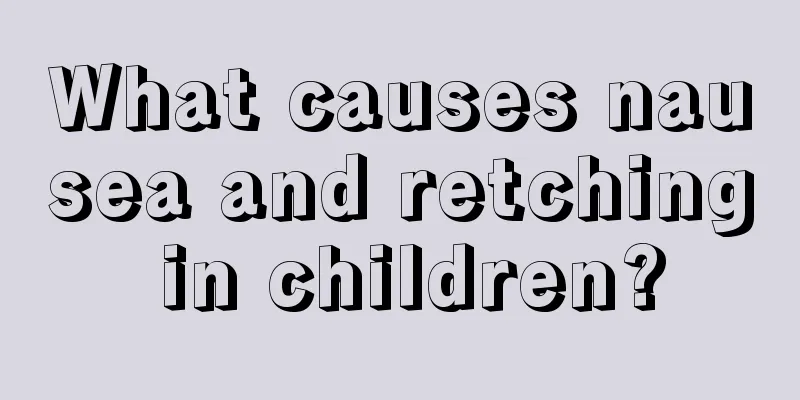Is the baby's soft waist related to the brain?

|
Babies are usually very soft when they are born, so they need to be handled with care. Because the baby's bones are not fully developed during infancy and are not as hard as those of adults. However, as the baby grows older, he will gradually learn to stand upright and walk. However, some parents find that their babies have reached the age where they can walk upright, but their bones are still very soft, especially the waist, which cannot support the baby's weight at all. So does a baby's soft waist have anything to do with the brain? Cerebral palsy in children is also called cerebral palsy in children, commonly known as cerebral palsy. It refers to a syndrome characterized by postural and motor dysfunction caused by non-progressive brain damage during the immature stage of brain development within one month after birth. It is a common central nervous system disorder syndrome in children. The lesions are located in the brain and affect the limbs. It is often accompanied by symptoms such as intellectual disability, epilepsy, abnormal behavior, mental disorders, and visual, hearing, and language disorders.Causes There are many causes of cerebral palsy in children, which can be summarized as follows: parents smoking, drinking, taking drugs, mother suffering from mental illness, diabetes during pregnancy, vaginal bleeding, gestational hypertension, placenta previa, threatened abortion or taking contraceptives to treat infertility, pregnancy-preserving drugs, etc.; high parity, premature birth, history of miscarriage, twins or multiple births, fetal growth retardation, intrauterine infection, intrauterine distress, placental abruption, placental dysfunction, umbilical cord around the neck, forceps delivery, long breech presentation, premature or post-term low birth weight babies, asphyxia and aspiration pneumonia after birth, hypoxic-ischemic encephalopathy, kernicterus, intracranial hemorrhage, infection, poisoning and malnutrition, etc.
Sudden stiffness of the child: difficulty in certain positions, such as dressing the child in a supine position, flexing his body or hugging him. Loose: The baby's head and neck are loose and he cannot lift his head. When he was held in the air, his limbs drooped. The baby rarely moves. Developmental delay: Learning to lift the head, sit, and use hands is slower than that of children of the same age. One part of the body may be used more than another, e.g. some children often use one hand instead of both. Poor feeding: Poor aspiration and swallowing. The tongue often pushes milk and food out. Difficulty keeping quiet. Abnormal behavior: May be crybaby, irritable, and a poor sleeper, or may be very quiet, sleep too much, or not smile at 3 months. 1. Early symptoms (1) Newborns or three-month-old infants are easily startled, cry incessantly, refuse to drink milk, and have difficulty sleeping. (2) Difficulties in early feeding, chewing, drinking, and swallowing, as well as drooling and breathing disorders. (3) Low sensory threshold, manifested as being easily startled by noise or changes in body position, and having an increased hugging reflex accompanied by crying. (4) Normal infants shortly after birth may step alternately with their feet when standing upright due to the stepping reflex. Although it may disappear once at 3 months of age, if the child still has no signs of standing or taking steps at 3 months of age, cerebral palsy should be suspected. (5) Babies over 100 days old are still unable to lift their heads, and their heads still sway when they straighten their backs at 4 to 5 months. (6) Fist clenching: Generally, infants can clench their fists but not open them within 3 months after birth. If the thumb is still adducted and the hand cannot be opened at 4 months, cerebral palsy should be suspected. (7) A normal baby should be able to reach out and grab objects when seeing them between 3 and 5 months old. If a baby still cannot do so after 5 months, it is suspected that the baby has cerebral palsy. (8) Generally, babies will smile 4 to 6 weeks after birth and recognize people later. Children with spastic cerebral palsy have apathetic expressions, while children with athetoid cerebral palsy often look sad. (9) Muscles are loose and unable to turn over, and movements are slow. When you touch the inner thigh of the child, or let the child's feet rest on the bed or jump up and down, the lower limbs will extend and cross. (10) Stiffness, especially when dressing, the upper limbs are difficult to put into the cuffs; when changing diapers or washing, the thighs are difficult to extend; when wiping the palms and taking a bath, the limbs become stiff. Babies don't like baths. (11) Premature development: Children with cerebral palsy may roll over prematurely, but it is a sudden reflexive rolling over, with the whole body rolling over like a log, rather than a conscious segmental rolling over. Infants with spastic diplegia may have stiff legs before they can sit up and stand on pointe like a ballerina.
(1) Movement disorders: The patient has poor motor self-control ability. In severe cases, the patient cannot grasp objects with his hands or walk with his feet. Some patients cannot even turn over, sit up, stand, or chew and swallow normally. (2) Postural disorders: Various abnormal postures, poor posture stability, the head cannot be straightened at 3 months, and is accustomed to leaning to one side, or swaying left and right, front and back. The child does not like to take a bath and has difficulty opening his fist when washing his hands. (3) Intellectual Disability: About 1/4 of the children have normal intelligence, about 1/2 have mild or moderate intellectual disability, and about 1/4 have severe intellectual disability. (4) Language barriers: difficulty in language expression, unclear pronunciation or stuttering. (5) The most common visual and auditory impairments include esotropia and difficulty in distinguishing the rhythm of sounds. (6) Growth and development disorders and short stature. (7) Developmental disorders cause teeth to be loose and easily broken. Orofacial dysfunction, with spasms or sometimes uncoordinated contractions of the facial and tongue muscles, difficulty chewing and swallowing, difficulty closing the mouth, and drooling. (8) Emotional and behavioral disorders: Stubbornness, willfulness, irritability, and withdrawal, with mood swings and sometimes compulsive, self-harming, and aggressive behaviors. (9) 39% to 50% of children with cerebral palsy develop epilepsy due to fixed lesions in the brain, especially those with severe intellectual disability. |
<<: Baby falls on head, causing brain damage
>>: Is it harmful to the baby's brain to do brain CT?
Recommend
Symptoms of penicillin allergy in babies
Penicillin is an antibiotic that is widely used i...
Why does the baby keep rubbing his eyes?
Babies are a special group in society. When exter...
How to take care of your baby if he has a fever and sweats? These methods are very useful
If the baby has symptoms of fever and sweating, h...
Red pimples on baby's hands
The symptoms of many skin diseases on the body ca...
What should I do if my two-month-old baby gets angry after drinking milk powder?
Some young mothers will find that their children ...
How to prevent baby's mouth peeling
Peeling of the mouth of newborns is a very common...
The interval between different vaccinations
Vaccination is a preventive measure taken by huma...
Can keratitis in children be cured? How to prevent it?
Keratitis is mostly caused by bacterial infection...
Can babies with enteritis eat breast milk?
The baby is relatively young and has a weak stoma...
Baby often sticks out tongue
It is cute when a baby sticks out his tongue ofte...
What to do if your child has white spots on his face
If there are white spots on your face, in most ca...
What are the physical methods to reduce baby’s fever?
Baby fever is a very common phenomenon in the bab...
7-year-old girl's underwear is a little yellow
Women often have some problems in their bodies, i...
Baby's dry lips
The dryness of the baby's lips is caused by s...
Is it good for children to drink milk every night?
Many children are now over one year old, but they...









